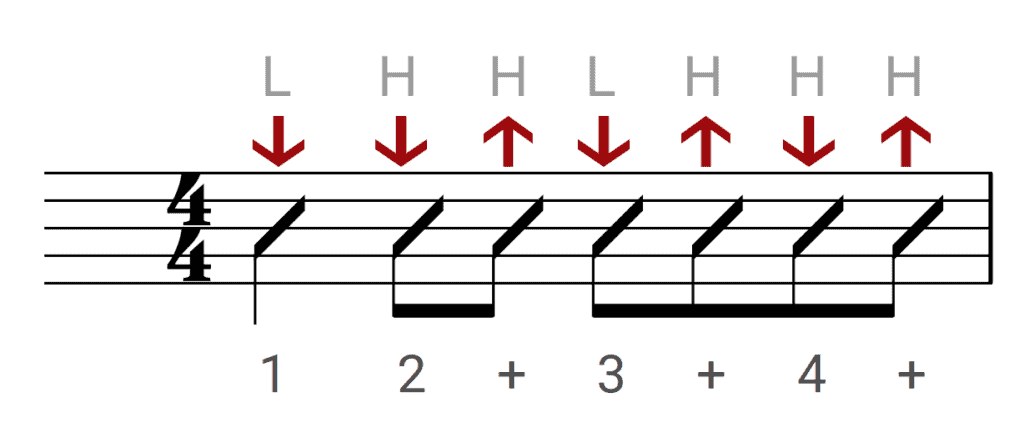Download Song Sheet Here
In this song, you can either use the traditional folk style C chord that you see me playing in the video or a more modern version of the C chord that I teach in the 3rd Adventure (also called a Cadd9 or a Cadd2).
At this point, it’s not worth worrying about. You will learn the folk style C chord in the 4th Adventure. Mostly it’s a matter of personal preference. I used the folk style in this song because it’s most common in this style of music.
Learn what they both sound like. You’ll find both invaluable.
Jambalaya Chords
In this key we’re going to be playing the chords C and G. I’m using the folk style C chord. For the G chord, I simply place my middle finger on the sixth string on the third fret and the pinky on the first string third fret. Feel free to use the traditional G chord fingering if that works for you.
Now it’s time to map out the song and check out its structure or form. Jambalaya has a very clear pattern of two measures of C, four measures of G and two measures of C. It looks like this:
C – C – G – G – G – G – C – C
Let’s play that with just one strum per bar at first. This pattern repeats over and over throughout the song, and both the verse and chorus use the same chord progression and number of bars.
Strum Pattern
I recommend you approach this song with a downstrum for every beat at first and sing it while you play to match chords and words. Going through the entire song with this pattern will really help you internalize its form and how the chords relate to the lyrics.
Once you have mapped out how the chords and the words fit together, then we can move on to a fancier strum. Naturally, the form stays the same regardless of the strum pattern.
Fancier Strum Pattern
For this more elaborate strum, we’re going to use a bass – strum pattern. This means you hit the bass part of the guitar (the lowest two or three strings) and this is followed by a strum on the high strings. This will be much easier than trying to just hit one bass string per chord. This strum pattern sounds authentic and in the vein of the Hank Williams version.

For the C chord, try muting the sixth string with the top part of your third finger. The sixth string is typically not played on the C chord, and by having it muted you can get a cleaner sounding C chord. Try playing the entire song and singing it with this pattern.
Changing Keys
Let’s look at two other keys in case you want to play along with The Carpenter’s version or John Fogerty’s. The key of G features the chords G and D, and is the one used by The Carpenters.
Here you’re going to aim for the lowest string for the G chord and for the middle of the guitar for the D chord. The D chord starts out on the fourth string, but don’t worry if you hit the A string as well, as it won’t sound bad. Another plus is that the key of G allows you to sing an octave lower, if that suits your voice better.
Key of G: G – G – D – D – D – D – G – G
The other common key is D, with the chords being D and A. For the A you’re going to hit the fifth string area for the bass part of the strum. And as mentioned above, for the D you’re going to aim for the fourth string but it’s ok if you hit the fifth string as well.
Key of D: D – D – A – A – A – A – D – D
Tip: You may want to try an A7 chord in place of the A and see how it sounds.
Conclusion
It can be quite fun to learn how to play Jambalaya on acoustic guitar. This song only features two chords and you can even play it in different keys to fit your voice.
Course Content
You need to login or register to bookmark/favorite this content.